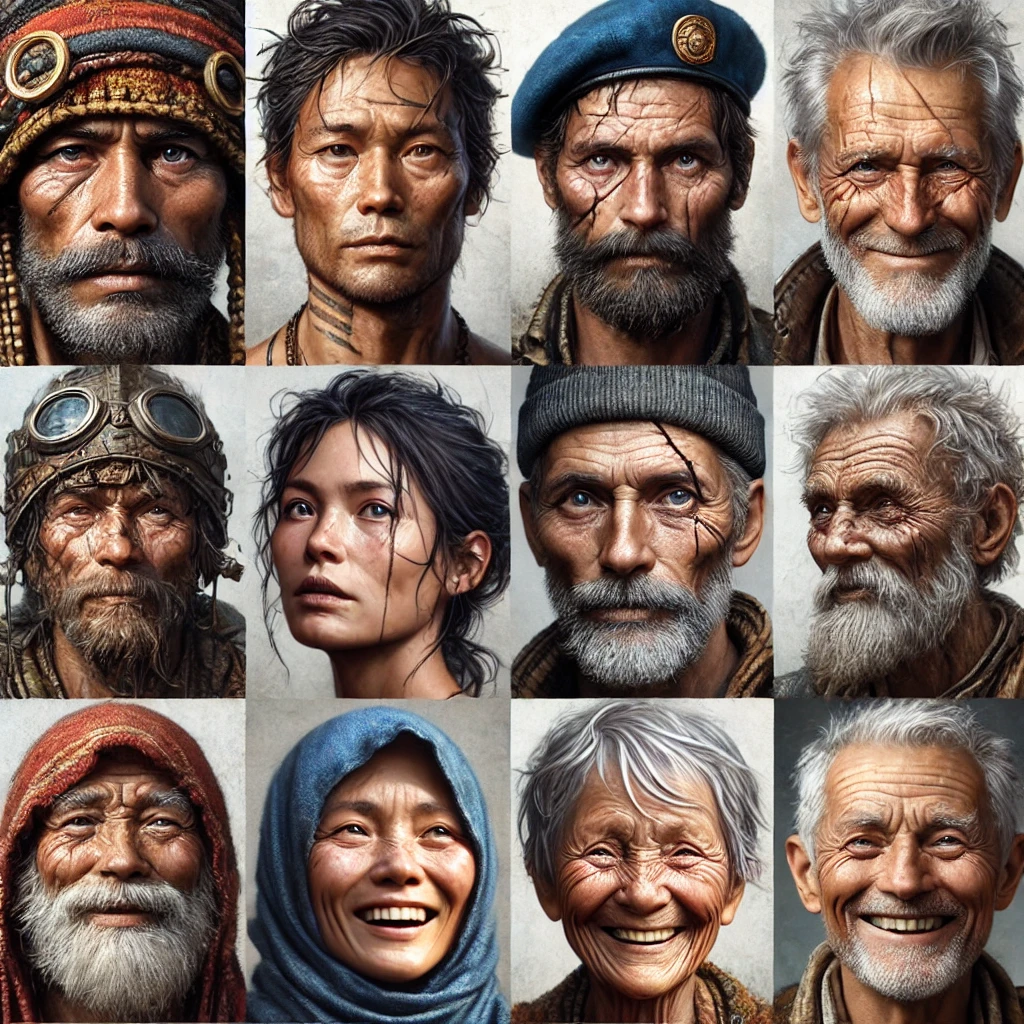Let’s talk about faces – not just any faces, but the ones you’re dreaming up for your characters. When creating a compelling character, their face is often the first thing readers visualize. But how do you go beyond basic features and create a description that truly tells a story? In this guide, we’ll explore expert writing tips on character face descriptions to make your protagonists and antagonists leap off the page.
Face Shape: The Foundation of a First Impression
A face isn’t just a set of features—it’s a personality statement. Character face descriptions start with shape, setting the tone for how readers perceive them.
- Angular faces suggest sharpness, intensity, or determination.
- Round faces convey warmth, youthfulness, or kindness.
- Heart-shaped faces often indicate charm and a touch of mischief.
Want to add depth? Contrast their face shape with their personality! A sharp-jawed character might have a surprisingly soft demeanor, or a round-faced one might be unexpectedly fierce.
Skin Tone & Complexion: History and Personality
A character’s skin tone and complexion add depth beyond just color. These elements can hint at their heritage, environment, or lifestyle:
- Porcelain skin might contrast a character’s tough nature.
- Sun-kissed tones suggest an adventurous, outdoorsy personality.
- Rich, deep hues often radiate confidence and heritage.
How does your character feel about their skin? Are they proud of it, self-conscious, or indifferent? These emotions can add layers to their personality.
Freckles, Scars & Unique Features: Stories Etched in Skin
Memorable characters often have defining facial quirks. Think about:
- Freckles scattered like constellations, adding charm.
- Scars that whisper tales of battles fought.
- Beauty marks that enhance allure.
These tiny details give readers something to latch onto. For instance, a character with a jagged scar across their cheek might wear it with pride—or constantly try to hide it.
Wrinkles & Expressions: Faces That Speak Volumes
Facial lines tell silent stories, revealing the emotions and experiences of a lifetime. Do they have:
- Laugh lines from years of joy?
- Frown lines etched by a life of worry?
- Crow’s feet hinting at wisdom?
Wrinkles and expressions add authenticity, making characters feel real and lived-in.

The Perfect Imperfections: What Makes a Face Unforgettable
Perfection is boring. A crooked nose, mismatched eyes, or a too-wide grin can make a character unforgettable. These imperfections hint at a life lived—struggles endured, laughter shared, and moments that shaped them. Think of Tyrion Lannister from Game of Thrones—his face tells a story before he speaks, capturing both his resilience and wit. A character’s unique features can serve as a visual metaphor for their inner journey, making them feel more authentic and deeply human.
Bringing It All Together
A great character face description focuses on a few key traits that leave a lasting impression. Instead of listing features, integrate them into action and personality:
“Her face was a paradox—freckles scattered like stars across a nose too proud for her shy smile, and a dimple that only appeared when she let herself laugh.”
Give readers just enough to spark their imagination, and they’ll fill in the rest.
Your Characters, Your Stories
So, there you have it. A character’s face is more than just a collection of features. It’s a gateway to their soul, reflecting their emotions, experiences, and inner struggles. The arch of an eyebrow, the crinkle of a smile, or the depth of a scar can all reveal hidden layers of personality. By paying attention to these subtle details, you can craft characters that feel tangible and real. Have fun with it, play around, and don’t be afraid to experiment. Your characters deserve faces that tell their stories, and your readers deserve to meet faces they won’t forget.
Use these tips to create faces that readers won’t forget, ones that evoke emotion and leave a lasting impression.
Call to Action: Need help developing your characters? Check out our Writing Unforgettable Characters Guide for more tips!


Recent Comments